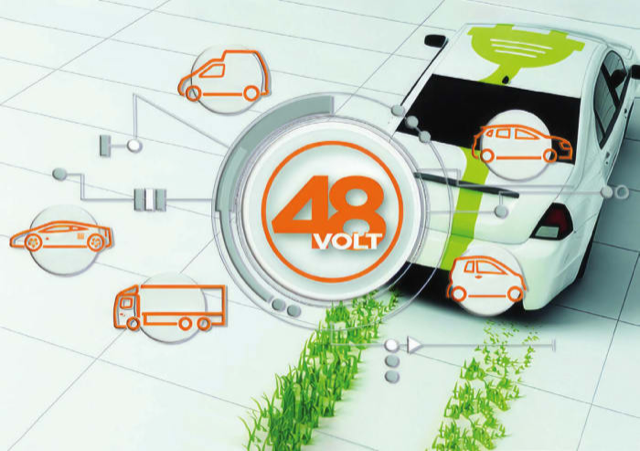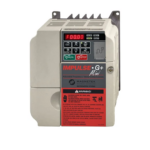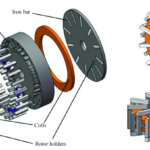If something can’t go on, it won’t; supplying the automobile’s voracious electrical demands from a 12-V battery is an example of this reality.
Topology changes affect the battery source
Due to the 12-V issues, many newer ICE vehicles and nearly all EV/HEVs also have a 48-V battery. This battery serves loads that are more efficiently powered by the higher voltage while retaining the 12-V source for lower current loads.
The 48-V DC/DC converter is usually designed to allow electrical energy to flow bidirectionally from one battery to the other as needed, under the direction of a sophisticated battery management (BMS) to optimally balance the energy sources versus load demand (Figure 1).

Battery management has become an extremely complicated system despite its apparent simplicity in a high-level bock diagram (Figure 2).

However, it’s not just the basic battery voltages that have increased. System demands have pushed designers to redo the basic topology of how the battery voltage and power get distributed and converted down to the lower-voltage rails for the electronics while also offering higher voltages for higher-power loads such as accessory motors, audio amplifiers in the tens and hundreds of watts, and more.
The battery energy capacity of a modern EV can range from about 30 kWh in a small EV like the Mini Cooper SE to over 200 kWh in a large and powerful EV like the GMC Hummer EV truck. Figure 3 shows the actual evolution and where it is going.

As cars became “electronics and computers” on wheels (left image), designers used a distributed topology with a central node. With this architecture, they could add new functions simply by adding new electronic control units (ECUs). Over the years, these additions expanded to between 50 and 100 (or more) ECUs and as much as 4 km (2.5 miles) of wiring harness, and often more.
This approach is simple and direct. However, a distributed architecture is no longer a suitable fit due to the sheer volume of the wiring, electrical inefficiency in power distribution, reliability considerations (including cybersecurity), and cost and safety considerations. Also, each added function needs its network connection in addition to its DC power.
As distributed architectures have become overwhelmed, designers are shifting to “domain” architectures with a partly decentralized power-distribution network (middle image). In this approach, functions such as ADAS, infotainment, and telematics are logically grouped, with each having its own processor. Although this domain approach makes logical sense, it actually can increase the amount of wiring and connections, therefore increasing vehicle weight, power loss, and cost. Somewhat counterintuitively, this architecture is ultimately necessarily the most efficient way to organize vehicle electrical and power distribution systems.
Looking ahead a few more years, there is a shift to fully centralized “zonal” architectures. With this architecture, systems are logically and physically grouped into zones that can be efficiently organized. In each zone, a single, powerful processor manages all the functions, and the zone is powered by a single power distribution unit instead of an array of highly localized units; also, there is a single network connection for the zone (Ethernet and others).
By moving the ECU closer to actuators and sensors, less wiring and fewer connections are needed, with obvious and non-obvious benefits. Cable-run lengths are significantly shortened through optimized device placement, and some cables are eliminated through functional integration. Thinner, flexible cabling for lower currents at higher voltages can be used in place of heavier, round, stranded-wire cables. This reduces BOM cost, simplifies cable runs, and is more conducive to robotic handling, assembly, and installation in production (an easily overlooked benefit).
Zonal implications include easier implementation of higher-voltage systems. While 12-V power systems have been the norm for decades, zonal architectures need 48 V to support higher power consumption and redundancy requirements. This is not a radical change, as many cars already have 12-V and 48-V battery packs. The 48-V power net delivers lower power loss and enables lighter wiring harnesses (Figure 4).

The next section will explore the implications of zonal architectures and how advanced DC/DC converters may eliminate the 12-V battery and perhaps even the 48-V battery.
Related EE World content
FAQ on magnetos for power and ignition, Part 1
FAQ on magnetos for power and ignition, Part 2
FAQ on traction motors, part 1
FAQ on traction motors, part 2
FAQ on traction motors, part 3
End-to-end connector portfolio meets needs of 48-V vehicle electrical systems
Boosting performance in 48-V power distribution
Autonomous Technology’s Growing Influence On Revamping Vehicular Electric Systems
Optimizing power delivery networks
External references
Cadence Design Systems, “What Is Zonal Architecture? And Why Is it Upending the Automotive Supply Chain?”
Vicor Corp., “48V systems: What you need to know as automakers say goodbye to 12V”
Vicor Corp., “Electric Vehicles: 48V is the new 12V”
Vicor Corp., “Tesla Cybertruck will eliminate 12V electrical components”
TE Connectivity, “Connectivity in Next Generation Automotive E/E Architectures”
Infineon, “Automotive power distribution system”
Clore Automotive, “The Evolution of the Automotive Battery”
Continental Battery Systems, “Car Battery Evolution – From Old-Tech to MIXTECH”
MDPI, “Characteristics of Battery Management Systems of Electric Vehicles with Consideration of the Active and Passive Cell Balancing Process”
ResearchGate, “A Systematic Approach to the Development of the Automotive Electrical Power System Architectures”
Inside EVs, “Tesla Confirms The Switch To 48 Volt System”
Texas Instruments, “Processing the Advantages of Zone Architecture in Automotive”







Leave a Reply